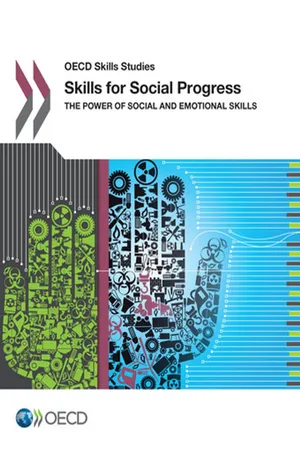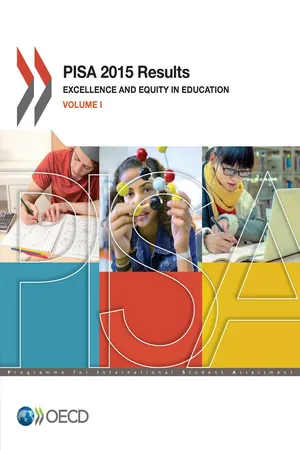Social Sciences
Educational Achievement
Educational achievement refers to the level of success a student attains in their academic pursuits, typically measured by grades, test scores, and completion of educational milestones. It encompasses both cognitive and non-cognitive skills, as well as social and emotional development. Factors influencing educational achievement include individual abilities, socioeconomic background, access to resources, and the quality of educational institutions.
Written by Perlego with AI-assistance
Related key terms
1 of 5
3 Key excerpts on "Educational Achievement"
- eBook - ePub
- John Hattie, Eric M. Anderman, John Hattie, Eric M. Anderman(Authors)
- 2013(Publication Date)
- Routledge(Publisher)
1 Understanding AchievementEditors: Eric M. AndermanOhio State UniversityJohn HattieMelbourne UniversityPassage contains an image
1.1 Defning Student Achievement
Thomas A. Guskey University of Kentucky DOI: 10.4324/9780203850398-2Introduction
Student achievement is the basis of nearly every aspect of education. It gives direction to all educational improvement efforts, provides the foundation for education accountability programs, and serves as the primary outcome variable in most educational research studies. The phrase student achievement is included in the titles of over 2,000 research studies and reports listed in the Education Resources Information Center (ERIC) system—more than any other phrase. Google Scholar lists nearly 5,000 resources published within the past decade with “student achievement” in the title.Given the prominence of student achievement in education policy, practice, and research, one might assume that we have a shared understanding of what it means. Unfortunately, that is not the case. Not only do policy makers, legislators, school leaders, teachers, parents, and researchers often define student achievement differently, tremendous variation exists in the definitions of individuals within each of these groups (Guskey, 2007 ). This lack of a common definition confounds efforts to determine the effectiveness of education improvement initiatives and thwarts attempts to develop consensus regarding the success of education reforms.The Concept of Achievement
In simplest terms, “achievement” implies “the accomplishment of something.” In education, that “something” generally refers to articulated learning goals. Although learning can occur in a wide variety of contexts, the focus of educators rests more narrowly on the learning that takes place in established instructional environments, specifically in classrooms and schools. Educators interact with students in these environments in purposeful and intentional ways to help students acquire explicit knowledge and skills. - eBook - PDF
- OECD(Author)
- 2015(Publication Date)
- OECD(Publisher)
2. LEARNING CONTEXTS, SKILLS AND SOCIAL PROGRESS: A CONCEPTUAL FRAMEWORK 33 SKILLS FOR SOCIAL PROGRESS: THE POWER OF SOCIAL AND EMOTIONAL SKILLS © OECD 2015 Education and skills outcomes can be analysed using measures such as educational attainment, grades on achievement tests, grade repetition and truancy. Labour market outcomes can be assessed using indicators such as work status (e.g. employment, unemployment, looking for job), type of work (e.g. full-time, permanent, self-employment) and earnings. Material conditions includes indicators such as income, assets, consumption and housing. Health status can be analysed by looking at positive behaviours (e.g. exercising, visiting the doctor regularly), risky behaviours (e.g. drug and alcohol use) and outcomes (e.g. body mass index, self-reports of health status and depression). Civic engagement can be assessed using measures of volunteering, voting and interpersonal trust. Personal security can be captured with data on bullying and violent acts, as well as criminal activity (e.g. personal theft, vandalism and assault). Family and social connections category comprises factors such as single parenthood; family breakdown; teenage pregnancy; contact with, and support from family and friends. Subjective well-being is represented by measures of life satisfaction, experiences of stress and other measures of subjective happiness. Environmental outcomes can be indirectly captured using individual’s pro-environmental behaviours, such as recycling, using public transport or their understanding of human impact on the environment. These individual outcomes are the building blocks of socio-economic outcomes at the aggregate level. - eBook - PDF
- OECD(Author)
- 2016(Publication Date)
- OECD(Publisher)
In this chapter, variation in performance is mainly examined as variation between and within schools. In line with the definition of science literacy in PISA 2015, the equity framework also recognises the affective dimensions of learning science as important student outcomes. These relate to students’ attitudes towards and beliefs about science, which can play a significant role in their interest, engagement and response to science-related issues and, in turn, in building strong foundation skills in science. From an equity perspective, the concern is that disparities in science performance related to students’ socio-economic and demographic backgrounds might extend to students’ attitudes towards science, including their expectations – or lack thereof – of a career in science or their appreciation of scientific approaches to enquiry. Students’ attitudes towards science and their self-beliefs about learning science are discussed in greater detail in Chapters 2 and 3. Socio-economic status and other background characteristics The chapter examines equity in education by focusing on students’ socio-economic status. In PISA, a student’s socio-economic background is estimated by the PISA index of economic, social and cultural status (ESCS), which is based on information about the students’ home and background (Box I.6.1). SOCIO‑ECONOMIC STATUS, STUDENT PERFORMANCE AND STUDENTS’ ATTITUDES TOWARDS SCIENCE 6 PISA 2015 RESULTS (VOLUME I): EXCELLENCE AND EQUITY IN EDUCATION © OECD 2016 205 Box I.6.1. Definition of socio‑economic status in PISA Socio‑economic status is a broad concept that summarises many different aspects of a student, school or school system.
Index pages curate the most relevant extracts from our library of academic textbooks. They’ve been created using an in-house natural language model (NLM), each adding context and meaning to key research topics.


